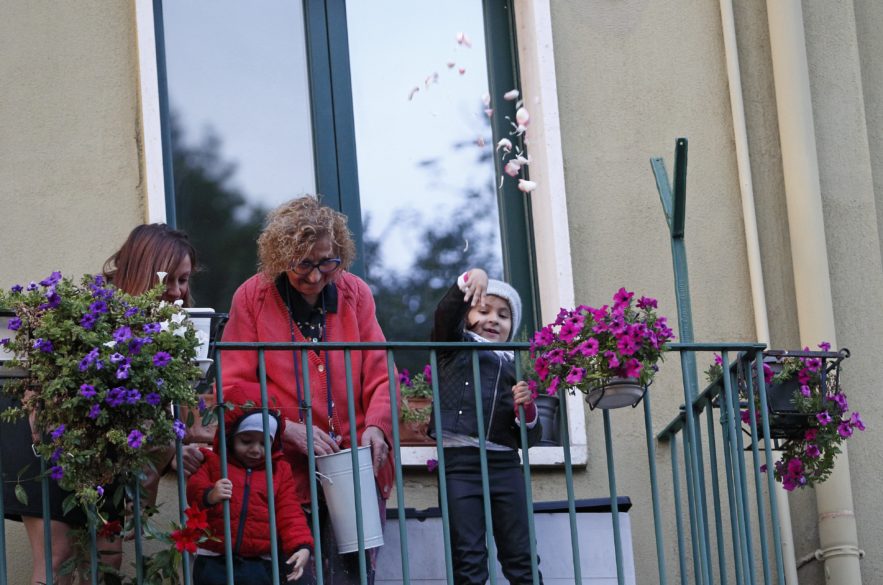
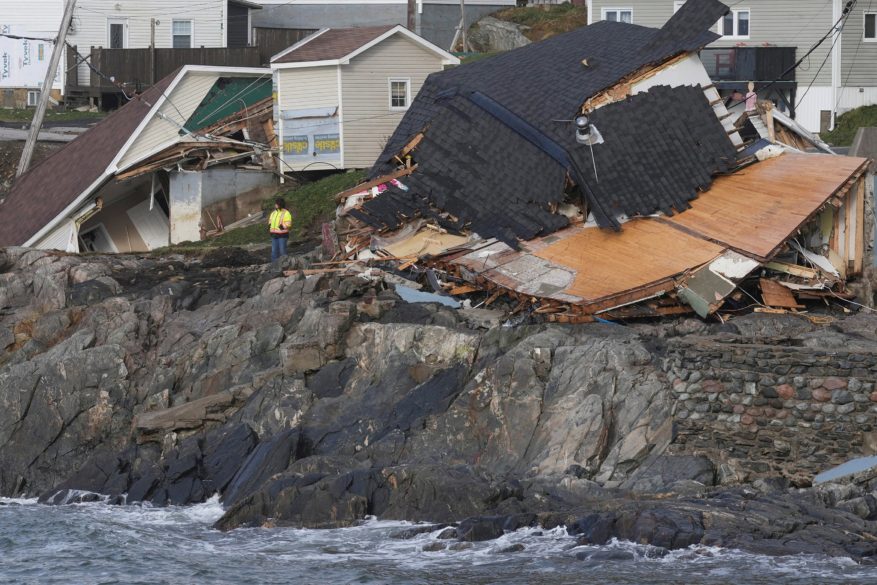

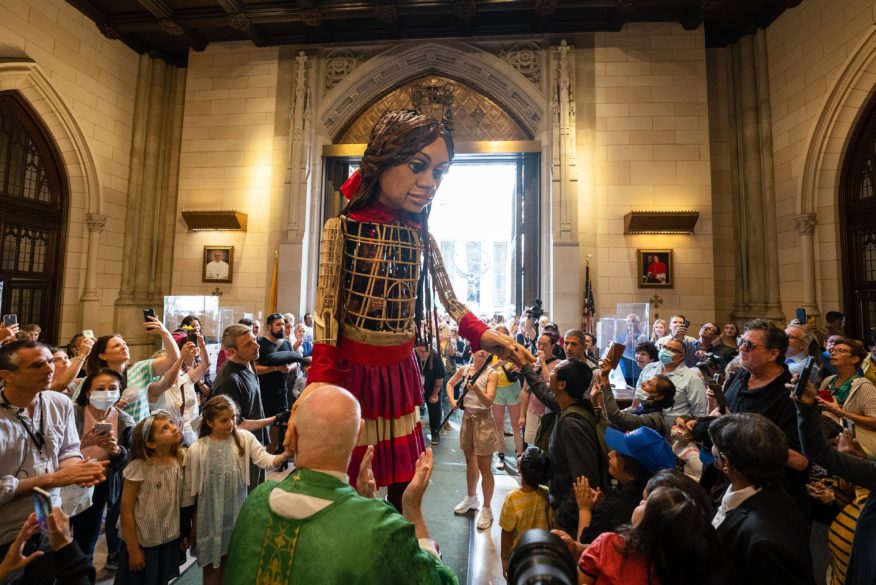
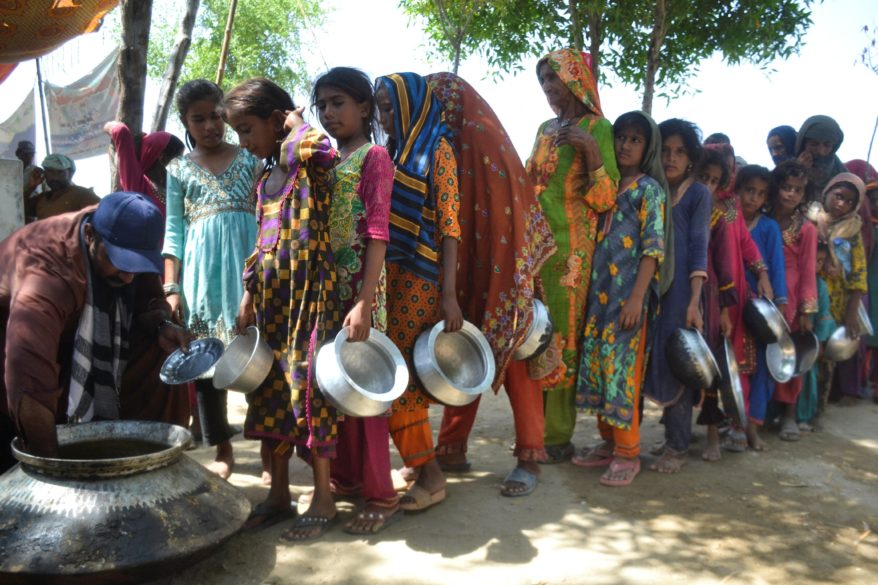





Por Rhina Guidos
WASHINGTON (CNS) – Todavía no se conocen todos los daños del huracán Ian en las diócesis católicas de Venice y St. Petersburg o en el resto de la Florida, pero el presidente Joe Biden dijo en una conferencia de prensa el 29 de septiembre que es probable que termine siendo uno de los huracanes más peligrosos en la historia de la Florida.
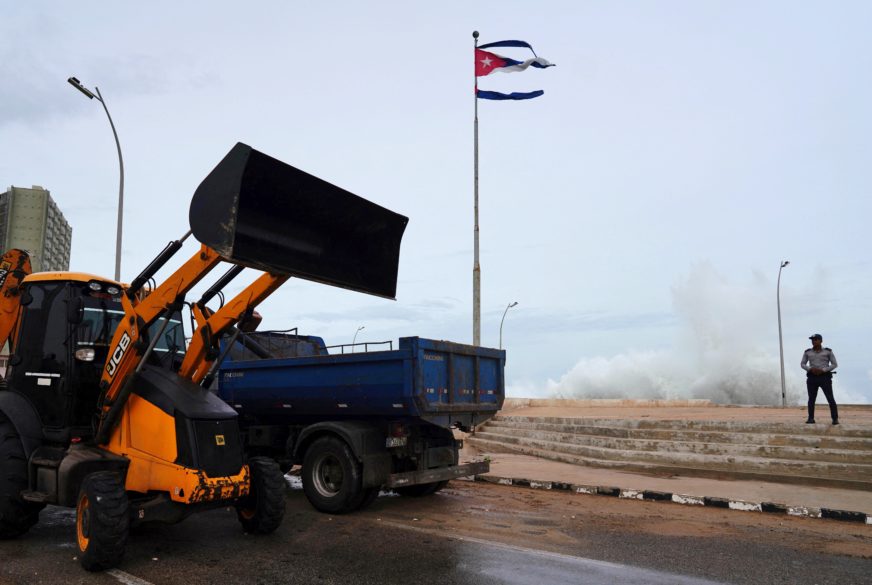
“Los números (de muertos)… aún no están claros, pero estamos escuchando los primeros informes de lo que puede ser una pérdida sustancial de vidas”, dijo el presidente.
No se reportaron muertes oficiales a principios del 29 de septiembre, pero las autoridades apenas estaban comenzando los esfuerzos de búsqueda y rescate, que se vieron obstaculizados por los escombros esparcidos en las carreteras y puentes dañados por vientos de 155 mph de Ian tras su pasó en la Florida el 28 y 29 de septiembre.
“Sabemos que muchas familias, muchas, muchas, están sufriendo hoy y todo nuestro país sufre con ellas”, dijo el presidente Biden durante la conferencia de prensa en la sede de FEMA en Washington.
Prometió visitar el estado en el futuro para no molestar durante esfuerzos iniciales de rescate, pero prometió ayuda económica del gobierno federal y ayudar a Florida a recuperarse.
El gobernador de Florida, Ron DeSantis, en una conferencia de prensa del 29 de septiembre, dijo que el impacto del huracán Ian en su estado es histórico. Informó que más de 2 millones están sin electricidad en su estado.
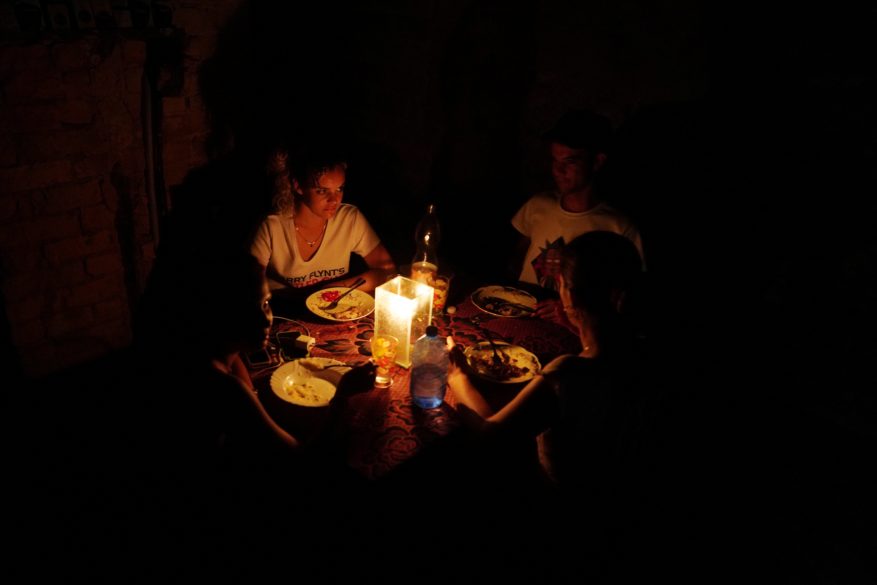
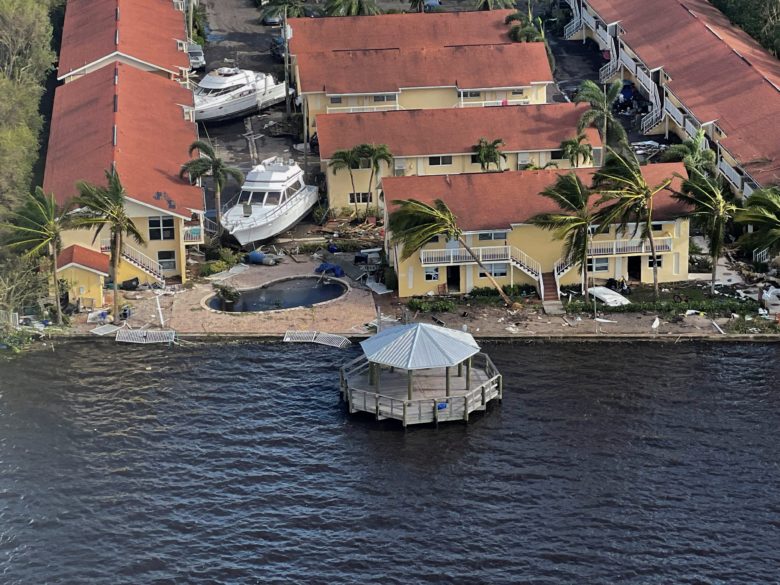
“El daño que se hizo ha sido histórico y esto es solo de las evaluaciones iniciales… Nunca hemos visto un evento de inundación como este. Nunca hemos visto una marejada ciclónica de esta magnitud”, dijo.
Organizaciones como Catholic Charities USA dijeron que cuentan con sus equipos de respuesta para hacer frente a las secuelas de la enorme tormenta de categoría 4 que azotó el oeste y el centro de Florida.
Incluso en un estado acostumbrado a fuertes tormentas, la destrucción de Ian asombró, dejando recuerdos de su poder en forma de automóviles golpeados por el viento y agua, que quedaron flotando en las calles inundadas de la ciudad junto a árboles y partes de techos arrancados de los edificios en las ciudades de Fort Myers, Tampa y Punta Gorda.
Parte de un puente que conectaba la isla de Sanibel con el continente de Florida se derrumbó.
En una serie de actualizaciones para el Tampa Bay Times, el reportero Zachary T. Sampson escribió el 29 de septiembre que: “En la playa de Fort Myers, los funcionarios de emergencia esperan encontrar cuerpos entre los escombros. Saben que la gente no hizo caso a las órdenes de evacuación…”.
Las diócesis de las áreas afectadas cerraron sus iglesias, escuelas y otros centros. La Diócesis de Venice publicó un video de las Siervas de la Virgen de Matara el 28 de septiembre mientras los voluntarios ayudaban a tapar las ventanas de la Iglesia St. Michael en Wauchula, en la parte norte de la diócesis.
No hubo actualizaciones en las redes sociales o en los sitios web de esas diócesis a principios del 29 de septiembre.
El obispo Gregory L. Parkes de St. Petersburg, que incluye a Tampa, y el obispo Frank J. Dewane de Venice habían pedido oraciones, sabiendo que sus territorios diocesanos estaban en el paso de la tormenta.
Algunos otros obispos de EE. UU. mantuvieron un ojo en noticias del huracán y ofrecieron su solidaridad con el pueblo de Florida.
“Oramos por todas las personas en Florida, especialmente por las vidas de las personas afectadas”, escribió el arzobispo Gustavo García-Siller de San Antonio en Twitter justo antes de que el huracán tocara tierra. “¡Que tú, Señor, seas su fuerza! No controlamos todo”.
Más de 2 millones seguían sin electricidad cuando el huracán, el cual disminuyó a tormenta tropical a principios del 29 de septiembre, se dirigía al norte hacia Georgia, Carolina del Norte y Carolina del Sur. Personas en Twitter pidieron noticias sobre las condiciones en lugares como Venice, cerca de donde la tormenta tocó tierra y donde muchos, incluso sus familiares, permanecen sin comunicación.
Las autoridades comenzaron a inspeccionar los daños a principios del 29 de septiembre, buscando a aquellos que no habían logrado salir antes del paso del huracán. Pidieron a los que se quedaron en sus hogares que permanecieran adentro mientras se llevan a cabo rescates acuáticos pero aún luchaban por abrir camino entre los escombros y las inundaciones y el viento restantes.
Catholic Charities USA dijo en un comunicado que sus equipos de respuesta a desastres “tienen un largo historial de movilización rápida para satisfacer las necesidades de los afectados por eventos catastróficos en los EE. UU. y sus territorios”.
La organización pidió donaciones en https://ccusa.online/Ian para ayudar a quienes enfrentan a la destrucción de la tormenta.
El gobernador DeSantis dijo el 28 de septiembre que los esfuerzos de recuperación necesitan asistencia económica y pidió a las personas que no envíen artículos, como ropa, a la Florida y mejor den ayuda económica o se ofrezcan como voluntarios.
También dijo que le pidió al presidente Biden una declaración de desastre mayor para que el gobierno federal pague los esfuerzos de recuperación en el estado. Biden dijo en su conferencia de prensa que el gobierno ayudaría al pueblo de la Florida.
En Cuba, donde Ian causó estragos el 27 de septiembre antes de dirigirse a Florida, la diócesis más afectada publicó el 28 de septiembre en Facebook fotos de daños generalizados, cultivos destruidos, techos dañados y edificios derrumbados en Pinar del Río, donde niños ayudaban con los esfuerzos de limpieza en las iglesias católicas.
La agencia de noticias EFE dijo que se reportaron tres muertes en la isla hasta septiembre y Cuba permanece en gran parte sin electricidad. Su cultivo de tabaco, famoso por los cigarros de la isla, ha resultado dañado.
“Las imágenes son devastadoras. Un pueblo sumido en la miseria y la desesperanza ahora se enfrenta al embate de un fenómeno natural de gran magnitud”, dice la publicación de Facebook de la página de la Diócesis de Pinar del Río, donde el huracán tocó tierra. “El huracán Ian ha destruido viviendas, cultivos, centros estatales, etc, pero también ha sembrado tristeza y desolación”.
La publicación dijo que tanques de agua resultaron dañados, junto con ventanas y techos, y propiedad personal en muchas casas, y “personas que se han quedado sin lo poco que tenían”, dice la publicación, y agrega que hay “en medio de todo, la tristeza y preocupación por un futuro muy incierto”.
“Así está la Diócesis de Pinar del Río hoy”, dice la publicación, pero agrega que “en medio de esta realidad la Iglesia desea hacerse presente para decirnos que no estamos solos, que Dios no nos ha abandonado”.
Por Carol Zimmermann
WASHINGTON (CNS) – La Corte Suprema comienza su nuevo mandato el 3 de octubre y vuelve a la carga con casos que abordan affirmative action (acción afirmativa), la votación, la inmigración, el medio ambiente y la libertad de expresión.
Este término incluirá un nuevo miembro, el juez Ketanji Brown Jackson, que reemplazará al juez Stephen Breyer, quien se retiró al final de la última sesión. También será la primera vez que se permitirá que el público regrese a la cancha desde el comienzo de la pandemia. A fines de septiembre, el tribunal no había anunciado si continuara brindando audio en vivo de los argumentos orales.
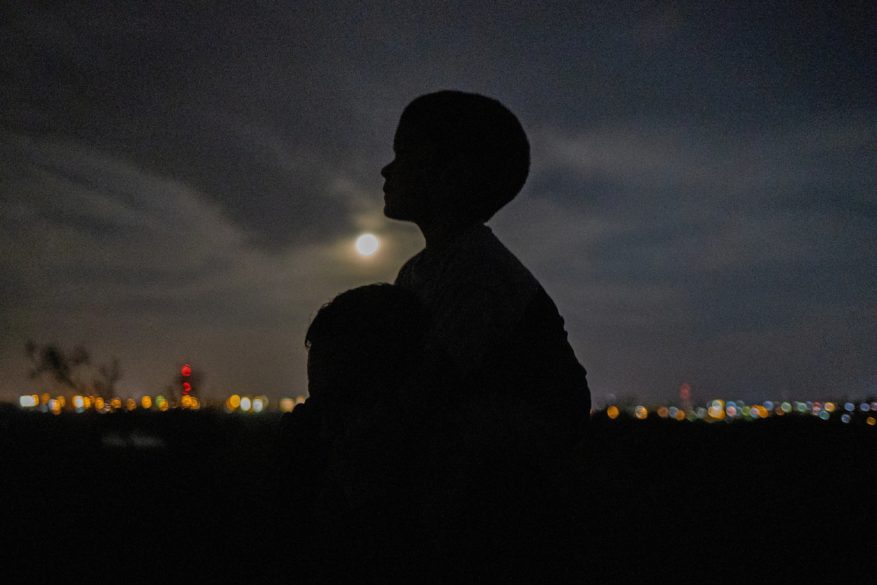
Otro cambio está afuera. Las barreras alrededor de la corte desde mayo, luego de que estallaron las protestas luego de una filtración del borrador de la opinión de la corte sobre su decisión Dobbs, ahora se han eliminado. La investigación sobre esa filtración, ordenada por el presidente del Tribunal Supremo, John Roberts, aún continúa.
Por ahora, el tribunal ha accedido a escuchar 27 casos y ha programado 18 de ellos.
En las semanas previas a la nueva sesión de la corte, las facultades de derecho y los grupos de expertos han presentado avances de los grandes casos que se avecinan y especulaciones sobre cómo podrían responder los jueces.
Adam Liptak, un reportero de la Corte Suprema de The New York Times, quien moderó algunos de estos paneles, señaló en una vista previa del 15 de septiembre de la Sociedad Constitucional Estadounidense, que la corte no se estaba tomando un respiro después de terminar “un mandato tumultuoso.”
Y este período, como en muchas sesiones anteriores, los líderes católicos tienen algo que decir sobre los casos importantes que se avecinan.
Un caso que recibe mucha atención es 303 Creative v. Elenis sobre un diseñador gráfico de Colorado que no quiere crear sitios web de bodas para parejas del mismo sexo basados en sus creencias cristianas sobre el matrimonio. El caso, que aún no tiene una fecha para los argumentos orales, es similar al caso de 2017 que involucró a un panadero de Colorado que se negó a hacer un pastel de bodas personalizado para una pareja del mismo sexo en base a sus creencias religiosas.
La Conferencia de Obispos Católicos de EE. UU.(USCCB), junto con la Conferencia Católica de Colorado y otros grupos religiosos, están del lado del diseñador como lo hicieron con el panadero hace cinco años. En un escrito, dijeron que este caso le da a la corte la oportunidad de aclarar los problemas de libertad de expresión que, según dijo, la corte no logró en el caso anterior, Masterpiece Cakeshop contra la Comisión de Derechos Civiles de Colorado.
En una vista previa de la corte del 21 de septiembre por la Sociedad Federalista, un panelista describió el caso del sitio web como una secuela de la decisión de la panadería de la corte y señaló que el caso inicial “en realidad no abordó los grandes problemas de discurso en juego” y en su lugar tomó un ” fuera de la rampa por poco a favor del panadero por motivos de libertad religiosa muy establecidos.”
“Aquí tenemos un nuevo tribunal”, continuó Amanda Shanor, profesora asistente de estudios legales y ética empresarial en la Escuela Wharton de la Universidad de Pensilvania. Una diferencia es que en el caso actual, la artista, Lorie Smith, no está luchando contra un incidente específico, como lo estaba el panadero que negó haber hecho un pastel personalizado para una pareja del mismo sexo. Smith quiere que la corte intervenga antes de que se le pida que diseñe un sitio web para una pareja del mismo sexo.
Aunque ella no desea brindar un servicio basado en sus creencias cristianas sobre el matrimonio, el caso depende de su reclamo de libertad de expresión. Shanor dijo que los paneles preliminares de la Corte Suprema en 2017 probablemente no predijeron que el panadero ganaría, pero ahora ya está bastante segura de que la corte probablemente fallará a favor del artista y dijo que el caso podría tener amplias implicaciones sobre quién puede ser visto como artista.
El escrito de la USCCB dijo que existe una “necesidad apremiante de que el tribunal aclare cómo se aplica la doctrina del discurso forzado a los casos de proveedores de bodas y otras disputas.” Instó a los jueces a hacer lo que han hecho en el pasado: “Aplicar la Cláusula de Libertad de Expresión para proteger el discurso religioso, fortaleciendo así la libertad no solo para los religiosos sino para toda la sociedad.”
También dijo que el caso actual “brinda una oportunidad apropiada y especialmente importante para invocar nuevamente las protecciones de la libertad de expresión para abordar las tensiones en curso en los casos de proveedores de bodas y en el contexto cultural actual en general” e imploró a la corte que “proteja a las personas de la expresión forzada” y proporcionar espacio en la plaza pública para las voces de las minorías.
Otros grupos que presentaron informes en nombre del proveedor de la boda incluyeron a Catholicvote.org, la Sociedad Thomas More, la Liga Católica para los Derechos Religiosos y Civiles y el Fondo Becket.
DignityUSA, un grupo de apoyo católico no oficial para católicos homosexuales y sus familias y New Ways Ministry, una pastoral católica para personas LGBTQ y sus familias, se unieron a un escrito presentado por 30 grupos religiosos y de derechos civiles que se oponen al caso del artista gráfico.
“Establecer esta amplia exención permitiría a las empresas públicas excluir legalmente a los clientes en función de sus identidades,” dijo y agregó que “en lugar de salvaguardar el derecho de todos los ciudadanos a comprar bienes y servicios de empresas abiertas al público, la exención propuesta lastimó aún más a las mismas personas que estas leyes de derechos civiles fueron diseñadas para proteger.”
Otro tema candente ante la corte este año involucra la acción afirmativa con dos casos separados, de la Universidad de Harvard y la Universidad de Carolina del Norte, que cuestionan la forma en que las instituciones de educación superior usan la raza como un factor en su proceso de admisión.
El tribunal eligió escuchar los dos desafíos el 31 de octubre por separado, ya que la jueza Jackson se recusó del caso de Harvard porque acababa de cumplir un mandato de seis años en el consejo de administración de la universidad.
La Universidad de Georgetown presentó un escrito de amicus curiae con 56 colegios y universidades católicas instando a la corte a respaldar la acción afirmativa en las admisiones en estos casos que desafían un precedente legal de 40 años.
El escrito, al que se unieron la Universidad de Notre Dame, el Colegio de la Santa Cruz, la Universidad DePaul y la Universidad de Villanova, entre otros, dijo que el derecho a considerar la diversidad racial en las admisiones es esencial para sus misiones académicas y religiosas y está “inextricablemente entrelazado” con sus fundamentos religiosos.
El informe también argumentó que este derecho está arraigado en la garantía de la Primera Enmienda de la libertad de expresión y el libre ejercicio de la religión, particularmente para las instituciones católicas de educación superior, cuya capacidad de tener discreción en la forma en que eligen a los estudiantes es fundamental para sus misiones religiosas.
Los impugnadores, en ambos casos, están instando a los jueces a anular su decisión de 2003 en Grutter v. Bollinger, un fallo que decía que la Universidad de Michigan podría considerar la raza en su proceso de admisión de pregrado como parte de sus esfuerzos para obtener un cuerpo estudiantil diverso.
Los líderes católicos y los grupos de inmigración también prestarán atención a Estados Unidos v. Texas, que aún no tiene fecha de argumento.
El caso examinará una vez más la autoridad del poder ejecutivo para establecer la política de inmigración, criticada por los líderes de Texas y Luisiana como demasiado indulgente. Desafía específicamente la política federal que da prioridad a ciertos grupos de inmigrantes no autorizados para su arresto y deportación.
En el último término, la corte dictaminó 5-4 en Biden v. Texas que la administración podría poner fin a la política de “Permanecer en México” de la era Trump, o los Protocolos de Protección de Migrantes, que requerían que las personas que buscaban asilo en la frontera sur de los EE. UU. se quedaran en México, hasta que su caso de asilo pudiera ser visto.
Otro caso de Texas, sobre la pena de muerte, ha atraído durante mucho tiempo la atención de los obispos católicos de Texas, los católicos que se oponen a la pena capital y las celebridades. El caso, Reed v. Goertz, argumentado el 11 de octubre, examinará cuándo los presos pueden presentar reclamos posteriores a la condena para pruebas de ADN de la evidencia de la escena del crimen.
Rodney Reed, condenado a muerte hace más de 23 años por el asesinato de Stacey Stites, de 19 años, ha mantenido su inocencia y sus abogados del Innocence Project(Proyecto Inocencia) han presentado pruebas de la escena del crimen, sin pruebas de ADN, que dicen implica a alguien más.
En 2019, cinco días antes de la fecha prevista para su ejecución, la Corte de Apelaciones en lo Penal de Texas concedió una suspensión indefinida de la ejecución de Reed y dijo que enviaría su caso de vuelta a la corte de primera instancia para una revisión adicional.
La Hermana Helen Prejean, de St. Joseph of Medaille, que se opone desde hace mucho tiempo a la pena de muerte, ha estado llamando la atención sobre el caso de Reed durante varios años, citando la falta de pruebas de su culpabilidad.
De manera similar, el obispo Joe S. Vasquez de Austin, Texas, dijo en una declaración de 2019 que si procede la ejecución de Reed, “existe un gran riesgo de que el estado de Texas ejecute a un hombre que es inocente de este delito y permita que la parte culpable quede libre.”
Otros casos importantes, ante la corte este término, involucran los derechos de voto, la Ley de Agua Limpia y un desafío a la ley del bienestar animal de California.
La corte inicia su nueva sesión en medio de un escaso apoyo público. Una encuesta de Gallup en junio encontró que solo el 25% del público tiene confianza en la corte.
Una encuesta realizada por la Facultad de Derecho de la Universidad de Marquette en septiembre encontró que el 40% de los adultos aprueba el trabajo que está haciendo el tribunal, mientras que el 60% lo desaprueba. Una encuesta similar realizada por la universidad dirigida por los jesuitas de Milwaukee en julio mostró que el 38% de los adultos estaba a favor del trabajo de la corte y el 61% lo desaprobaba.
Ambos resultados estuvieron por debajo de la aprobación judicial que encontró la encuesta en 2020 y principios de 2021.
Por Rhina Guidos
WASHINGTON (CNS) – Mientras las autoridades federales anunciaban el 20 de septiembre un récord histórico de detenciones en la frontera entre Estados Unidos y México (más de 2 millones), una conferencia anual sobre inmigración se llevaba a cabo en el Centro de Derecho de la Universidad de Georgetown en Washington.
La 19ª Conferencia Anual de Inmigración y Políticas, que reúne a trabajadores gubernamentales, políticos, abogados, periodistas, y representantes de organizaciones humanitarias, reveló números y tendencias en el movimiento de personas a través de los continentes.
Sin embargo, las soluciones siguen siendo pocas.
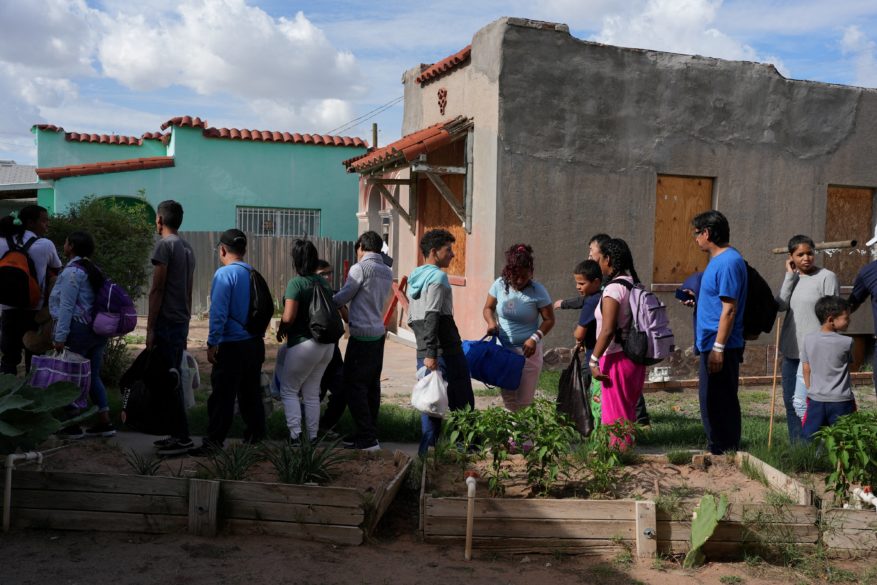
“En general, no se ve bien” el panorama, expresó la panelista Caitlin Dickerson, reportera de inmigración de la revista The Atlantic, hablando de su informe sobre la posición del Congreso sobre cualquier posible acuerdo en asuntos de inmigración. Ha resultado difícil encontrar una solución sobre qué hacer con los aproximadamente 11 millones que se encuentran en el país sin permiso legal, así como un alivio permanente para quienes ingresaron ilegalmente al país cuando eran menores.
No solo hay división entre los dos principales partidos del país, sino que incluso los propios partidos están divididos sobre qué hacer, reveló. “Cada vez que piensas, tal vez van a empezar a colaborar, y no lo hacen … es sorprendente y también no”, dijo Dickerson. “Estamos de vuelta donde hemos estado tantas veces”.
La conferencia se llevó a cabo en persona por primera vez desde que comenzó la pandemia de coronavirus, pero también incluyó participación en línea. Los participantes escucharon cómo los cubanos, nicaragüenses, y venezolanos, quienes huyen de gobiernos autoritarios y economías en crisis, se unen cada vez más a los centroamericanos que ingresan al país en la frontera entre Estados Unidos y México.
Algunos se preguntaron cuáles serían las implicaciones para los políticos republicanos, como Marco Rubio, que tienen grandes electorados de personas de raíces cubanas y venezolanas. A pesar de que promocionan una línea dura contra los gobiernos de los países de los cuales viene la nueva ola de inmigrantes, políticos como Rubio también votan en contra de legislación de inmigración.
Sin embargo, como señaló Dickerson, los demócratas tienen sus propios problemas en temas de inmigración.
“No son solo los conservadores de extrema derecha los que están impidiendo que los demócratas cambien algo en el Congreso en este momento, también son los demócratas moderados”, acotó. Cuando uno observa proyectos de ley de inmigración más ampliamente, “no había demócratas moderados que firmaran para copatrocinar esos proyectos de ley. Se veía a los mismos miembros de la izquierda progresista que suelen pronunciarse sobre este tema”, y ellos estaban “allí, solos”, acotó.
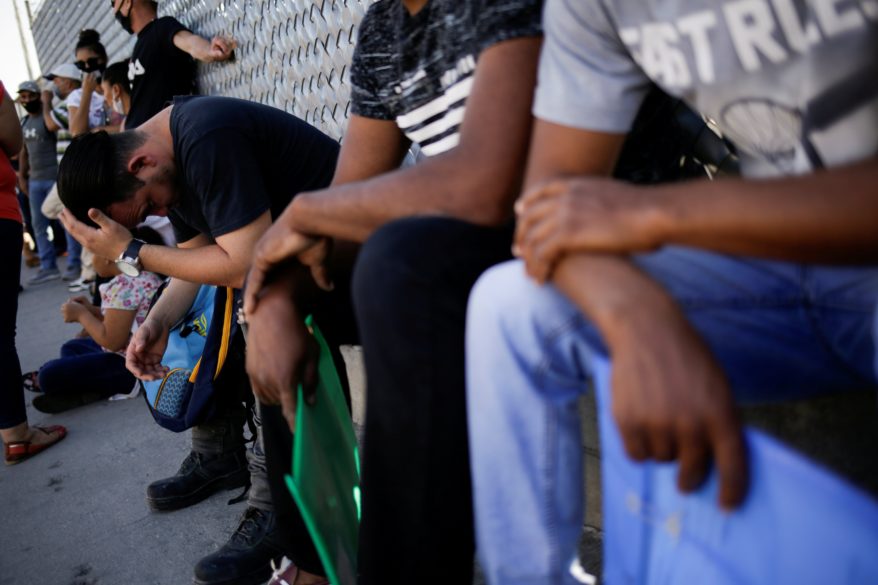
En el frente de los refugiados, el representante del Departamento de Estado de Estados Unidos, Lawrence Bartlett, director de admisiones de refugiados, dijo que, si bien “nos hemos quedado cortos” ante la meta establecida por el presidente Joe Biden de admitir 125,000 refugiados en Estados Unidos este año fiscal, el país ha acogido a un gran número de personas que huyen de situaciones peligrosas. Si bien Estados Unidos habrá admitido alrededor de 25,000 refugiados oficiales en el año fiscal que finalizará el 30 de septiembre, bajo un programa de “libertad condicional”, 80,000 afganos han ingresado al país, manifestó, con 90,000 ucranianos con libertad condicional, pero solo 55,000 han entrado al país.
Bartlett habló de cómo, aquellos que ayudan a los migrantes y refugiados, están explorando una serie de formas de lidiar con el rostro cambiante de los refugiados y las situaciones. Una de esas formas incluye identificar a aquellos que califican para el estatus de refugiado mientras aún están en sus países de origen, para que no tengan que emprender el peligroso viaje hacia el norte.
“Tratar de averiguar quién es un refugiado mientras todavía están en su país es complicado”, dijo. Es más fácil identificarlos en lugares como Nicaragua, Cuba y Venezuela, pero más complicado en lugares como Guatemala, Honduras, y El Salvador sostuvo. “Todavía no hemos descifrado el código” sobre el reasentamiento de refugiados en esa zona, agregó.
La conferencia también organizó una charla con el gobernador republicano Asa Hutchinson de Arkansas, quien, en 2019, firmó un proyecto de ley que permite a los beneficiarios de la Acción Diferida para los Llegados en la Infancia (DACA, por sus siglas en inglés), de la era de Barack Obama, obtener licencias profesionales u ocupacionales en el estado.
Los beneficiarios de DACA fueron traídos al país ilegalmente cuando eran menores de edad, pero el estatus les otorga un aplazamiento de deportación, un permiso de trabajo, y otra documentación temporal, siempre que cumplan con ciertos criterios. Hutchinson habló de los beneficios para su estado y cómo los beneficiarios de DACA contribuyen a la fuerza laboral en profesiones como la enfermería y la enseñanza.
Un participante le preguntó a Hutchinson si apoyaba o condenaba las acciones recientes de sus compañeros republicanos de transportar y dejar grupos de migrantes varados en varias partes del país. En el momento de la conferencia, el gobernador de Florida, Ron DeSantis, enfrentaba críticas por enviar un grupo compuesto principalmente por venezolanos a Martha’s Vineyard.
Hubo preguntas sobre por qué el gobernador de Florida había sacado al grupo de Texas y bajo circunstancias que aún no se conocen. Una firma de abogados de derechos civiles presentó una demanda colectiva contra el gobernador tras el incidente, pero la oficina del gobernador dijo que los inmigrantes firmaron documentos estando de acuerdo con ser trasladados a Massachusetts.
“Lo diré de esta manera. No lo he hecho, no he hecho eso, no tengo la intención de hacer eso. Más allá de eso, estos migrantes tienen que ofrecerse como voluntarios para ser transportados … Dejaré que esos hechos se desarrollen”, dijo, y agregó que las personas tenían que ser tratadas humanamente.
Hutchinson reconoció la ruptura del sistema de inmigración y dijo que “cuando hablamos de inmigración, tenemos que reconocer la importante historia de la inmigración para el tejido de nuestro país”. Hablando del anhelo de “aquellos que quieren venir a nuestras costas”, sus esperanzas de libertad hacen de Estados Unidos un lugar mejor, dijo. “Obviamente, queremos que vengan aquí a través de un proceso ordenado y legal”, agregó. Sin embargo, la política tiene que ser estricta, dijo, y tener en cuenta orden y la seguridad de la frontera.
“Tienes que tener una política estricta por sobre encima de la compasión. La razón es que una política compasiva básicamente les dice a todos:
‘Nuestras fronteras están abiertas’ y eso es lo que ves durante esta administración. Y entonces es una circunstancia tipo de ‘amor duro’. Tienes que mostrar fuerza para obtener el control de esa frontera”
Sin embargo, la administración de Biden ha sido criticada por los defensores de la inmigración, en particular por las palabras de la vicepresidenta Kamala Harris en julio de 2021 en Guatemala, cuando dijo a posibles inmigrantes de América Central que “no vengan”.
Es un mensaje que los funcionarios de la administración de Biden han repetido.
El orador principal de la conferencia, el fiscal general de Connecticut, William Tong, dijo que muchas veces las personas hablan de la inmigración como un problema para las personas en la frontera sur, uno en el que se trata a los inmigrantes como “el otro”. Esto no reconoce que casi todos en Estados Unidos tienen una conexión personal con la inmigración y están aquí porque vino uno de sus antepasados, dijo.
“Mi historia comenzó cuando mi papá emigró a este país”, dijo.
By Bishop Paul S. Coakley, Archbishop of Oklahoma City, Chairman of the Committee on Domestic Justice and Human Development
Sept. 5, 2022 – The church often looks at the well-being of society through the lens of the well-being of the family. As Pope Francis said during his visit to the United States in 2015, “We cannot call any society healthy when it does not leave real room for family life. We cannot think that a society has a future when it fails to pass laws capable of protecting families and ensuring their basic needs…”1 This Labor Day, let us reflect on how we can build a more just economy by promoting the welfare of working families through both charitable works and through advocacy for improved policies such as expanding the Child Tax Credit and passing the Pregnant Workers Fairness Act. Advancing these two policies would have a profound impact on family stability, especially for families who are financially vulnerable.
Some recent reports have found the economy is returning to a pre-pandemic norm with regards to unemployment rates.2 However, other reports demonstrate that, while wages are rising, much or all of the increases are lost to inflation, which affects low-income families the most and puts our economy in a precarious position.3 I pray that government leaders who deal with inflation may have prudence in addressing its complexities and challenges.
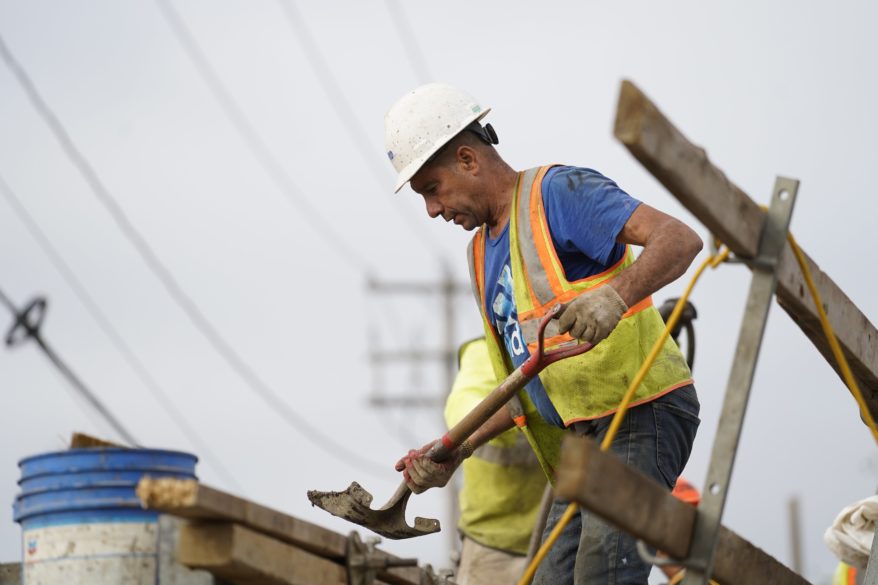
But pre-pandemic norms were far from perfect. Even before current economic uncertainties, women – especially women of African descent and Latina women – earned less than their male counterparts, including when doing the same work with the same qualifications. They filled the majority of direct care jobs, experiencing increased risk of injury, high stress, and exposure to illness while earning low wages.4,5 They were the majority of caretakers for their loved ones, yet many lacked adequate family and medical leave policies. These and other economic challenges continue to affect working families and children.
This is also the first Labor Day since the Supreme Court’s reversal of Roe v. Wade. The ruling is an incredibly significant step towards healing the deep wounds of abortion and protecting all preborn human life. But our aim as Catholics has always been, and remains, to build a society in which abortion is unthinkable. This unique moment necessitates a society and an economy that supports marriages, families, and women; it demands that all of us reach across political aisles and work diligently to reframe social policies in ways that are pro-woman, pro-family, pro-worker and, thus, authentically pro-life.
One of the USCCB’s policy priorities this Congress has been supporting the Pregnant Workers Fairness Act (PWFA). There is currently no federal law requiring employers to provide short-term, reasonable accommodations to pregnant women in the workplace and the PWFA would do so. Common requests include being able to carry a bottle of water, a stool for jobs that involve long periods of standing, or lighter duty for jobs that entail heavy lifting. Women in low-wage and physically demanding jobs, disproportionately held by women of color, are regularly denied these simple accommodations and terminated or forced to take leave without pay.6 A number of states already have laws like this in place; however, pregnant women in every state should be protected by these standards. No woman should be forced to risk her or her child’s health, miscarriage, preterm birth, economic security or losing insurance benefits just because she requests a short-term, reasonable, pregnancy-related accommodation. The U.S. House of Representatives has already passed this bill with strong, bipartisan support. Now, with a short time left in this current legislative session of Congress, we urge immediate Senate passage of this proposal that would make the workplace safer for women and their preborn children. Hundreds of Catholics who participated in this year’s Catholic Social Ministry Gathering advocated for this bill in meetings with their U.S. Senators and we encourage Catholics to continue doing so through the advocacy center on the USCCB website.
The USCCB has also been actively advocating in favor of expanding the Child Tax Credit (CTC). In 2021, the CTC provided financial relief for families who were having difficulty making ends meet. Families largely spent this money on food, energy bills, housing payments and other basic needs. With rising inflation, continuing to expand this tax credit would be critically helpful to families forced to choose between buying food and filling up their gas tanks. Congress should move forward with a CTC proposal that has no minimum income requirement, includes families with mixed immigration status, is available for the year before birth, and is offered to every child – regardless of the size of the family. The CTC was enormously effective at reducing child poverty in 2021 and we should not regress from this progress.
Additionally, the USCCB supports federal paid leave policy, just wages, and the right to organize. We have long called for a system in which the whole of society enjoys fundamental human needs including nutrition, affordable housing, education, and health care. These common goods cannot be achieved through individual efforts alone, but require the collaboration and cooperation of everyone, and the exclusion of no one.
Just as significant as federal policy, there is much work that can be done locally to advance the dignity of work. For example, there are always opportunities to volunteer to help struggling families, such as with Catholic Charities. Additionally, the efforts of labor unions have helped union workers fare better during the pandemic than non-union workers, as they were more likely to maintain their pay and their jobs. To this end, the Catholic Campaign for Human Development supports organizations that work on low-wage workers’ rights and training, in an effort to eliminate labor trafficking and related workplace abuses such as wage theft.
Finally, in writing this Labor Day reflection, I am reminded of Monsignor George Higgins, who passed away 20 years ago this year. He was a fervent advocate of economic justice for all, working closely with unions and union organizers, including Cesar Chavez and the United Farm Workers, and received many awards, including the Presidential Medal of Freedom. He was the director of what was then called the Social Action Department of the bishops’ conference and, in fact, wrote or was consulted on the U.S. Catholic bishops’ Labor Day statements for decades. Inspired by him, let us continue his good work in building a just society for all. May the spirit and example of Monsignor Higgins inspire us, that we might have the wisdom to build up justice and improve the lives of workers and their families as he did throughout his life.
1 Pope Francis, Prayer Vigil for the Festival of Families (Sept. 26, 2015). Apostolic Journey – United States of America: Prayer vigil for the Festival of families at the B. Franklin Parkway (Philadelphia, 26 September 2015) | Francis (vatican.va)
2 U.S. Bureau of Labor Statistics, Employment Situation Summary (Aug. 5, 2022). https://www.bls.gov/news.release/empsit.nr0.htm
3 U.S. Bureau of Labor Statistics, Employment Cost Index Summary (July 29, 2022). https://www.bls.gov/news.release/eci.nr0.htm
4 PHI. Direct Care Worker Disparities: Key Trends and Challenges (Feb. 8, 2022). https://www.phinational.org/resource/direct-care-worker-disparities-key-trends-and-challenges/
5 PHI. Workplace Injuries and the Direct Care Workforce (April 20, 2018). https://www.phinational.org/resource/workplace-injuries-direct-care-workforce/
6 A Better Balance. Long Overdue: It is Time for the Federal Pregnant Workers Fairness Act (May 2019). https://www.abetterbalance.org/wp-content/uploads/2019/05/Long-Overdue.pdf
By Catholic News Service
WASHINGTON – Evangelizing the whole church, taking personal responsibility for the mission to evangelize, engaging youth and young adults better, accompanying families, asking parishes to become more welcoming, understanding the experience of LGBTQ+ Catholics and allowing more women in church leadership roles.
These are some common themes that surfaced in a sampling of U.S. dioceses’ synthesis reports on listening sessions they held in preparation for the world Synod of Bishops on synodality in October 2023.
Dioceses utilized several different tools and opportunities to gather feedback: in-person and online group listening sessions, one-on-one meetings, targeted outreach efforts, online surveys and other methods.
In the listening phase, members of parishes, dioceses, religious orders and Catholic movements were asked to consider the ways in which they currently experience the church as “synodal,” that is, as a community that walks together, and to suggest ways to strengthen that in practice.
A synthesis of the listening sessions formed a report each diocese had to submit to the U.S. Conference of Catholic Bishops; 16 regional teams were working on drafting regional reports synthesizing diocesan reports.
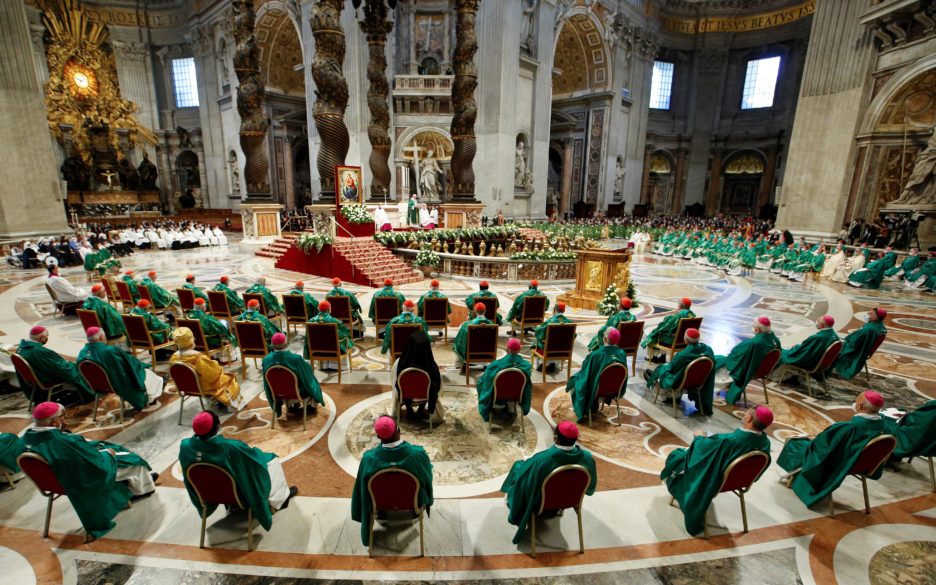
The USCCB will in turn synthesize the summaries from throughout the nation for a report to submit to the Vatican Secretariat of the Synod of Bishops.
The secretariat will use the reports from bishops’ conferences around the world to develop the “instrumentum laboris,” or working document, to guide continental or regional ecclesial assemblies that will take place by March 2023.
“Pope Francis’ vision for the synod called for the largest consultative process both in the history of the Catholic Church and the history of humankind,” said Seattle Archbishop Paul D. Etienne, who attended several local gatherings.
The archdiocese’s report captures feedback from nearly 1,000 online and in-person gatherings since January, involving over 11,000 people across western Washington.
“I’m so proud of the many thousands of people in western Washington who led, participated and invited others to prayerful dialogue. These events were marked by prayer, heartful sharing and attentive listening,” Archbishop Etienne said.
“The purpose was not to determine solutions; rather to practice walking with each other as church, to listen for the Holy Spirit and to begin to discern what God is asking of us in our time,” he added.
Suggested discussion prompts were intentionally broad. One participant described the synod as “an official, church-sanctioned conversation in which there are no taboo subjects, no off-limits subjects, no wrong answers.”
More than 90% of the archdiocese’s parishes are represented in its synod synthesis report. Additionally, listening sessions were held with students, the imprisoned, Catholic Community Services of Western Washington and women religious.
In the Archdiocese of Louisville, Kentucky, the faithful shared their experiences of the church during 120 in-person group listening sessions.
Seventy-eight sessions were hosted by parishes; 12 were based at schools; 23 were conducted through archdiocesan agencies and outreach programs; four religious orders hosted sessions; three lay associations held listening sessions.
“This synthesis reveals pain and challenges within our church along with opportunities for healing and growth,” wrote Louisville Archbishop Shelton J. Fabre in a cover letter accompanying the archdiocese’s synthesis. “It also reflects the great enthusiasm with which participants entered into this process.”
For thousands of Catholics in the three-county Diocese of Paterson, New Jersey, the listening phase was “more than simply an enormous feedback session.”
“The process was a deeply spiritual moment of collective discernment and encounter connected to the universal church,” the diocese said in its synthesis report.
“A full spectrum of opinions was represented,” it said. “Some called for the church to fully adapt and adjust to current times and trends; still, others to clearly articulate her immutable, orthodox teaching without compromise.
“Contrasting suggestions were made; for example, to limit the participation of, and presence of, the laity in the sanctuary and affirm the male, celibate priesthood versus to allow a married clergy and ordain women as deacons and/or priests.”
Participants identified a lack of inclusion and sensitivity to women, the Hispanic/Latino community, LGBTQ+ people, families with young children, people with special needs, people victimized by abuse, the elderly, “and other people who, for whatever reason, feel that they do not conform to the prevalent social or moral norms,” the report said.
“Although not all participants called for a change in the church’s teaching on these matters, they did call for a change in approach and attitude,” it said. “Most participants articulated a need for more listening and consultation in the church – most especially to engage the next generations.”
Diocesan spokesperson Jai Agnish said that “reading the report was a moving experience.”
“The feedback is real and authentic and provides an honest assessment of experience and perceptions of Catholics right now. It also offers great hope for the future,” Agnish said. “The report reveals a deep concern and love for the church and reflects on the positive dynamism of this collective discernment process.”
Each parish in the Denver Archdiocese held listening sessions after an archdiocesan-wide retreat in Advent on mission of the synod. At these sessions, parishioners prayed together and discussed questions about mission.
This was followed by the archdiocesan discernment event March 25-27, where representatives from across the archdiocese “gathered to pray and discern together” what was revealed in the listening phase.
The faithful identified four primary missions, according to the archdiocese’s report:
– The disciple: “Take seriously that we have personal responsibility for the mission to evangelize those closest to us: our family, neighbors and co-workers.
– The family: “Every family needs accompaniment of some sort. Help the family to encounter healing and forgiveness. Recognize that parents are the primary formators and educators of their children. There is a desire to receive formation on how to do this well.”
– The parish: “God is asking our parishes to become more welcoming. The parish doesn’t exist for its own sake but is sent out for the sake of the broader community. … We need to reach out with the good news, with the treasure we have, and share it with those who have fallen away, with the poor, and with the broader community. The Eucharist is the soul of the parish.”
– The Denver Archdiocese: It “is called to be an agent of unity, manifesting the unity of the mystical body of Christ. She is especially called to help unify the divides between our diverse languages and cultures. Clarity of communication about our mission, more initiatives for communal prayer and healing of wounds will all help to bring about this unity.”
In Iowa, the Diocese of Davenport’s “58,000 Cups of Coffee” initiative fueled synod conversations.
Massgoers were invited to have conversations with at least three different people: someone already in the pews; someone who used to be in the pews but hasn’t been since the pandemic; and someone who has never been a part of a faith community or stopped practicing long ago. Responses were shared on the diocesan website.
The coffee initiative was one of two prongs of the diocese’s synod preparation process. The other prong focuses on organized listening sessions. Responses from the listening sessions and conversations provided the content for the diocese’s 10-page summary.
On a regional level, Patrick Schmadeke, diocesan director of evangelization, represented the Davenport Diocese on the Region IX team working on its own synod report. Altogether, 17,044 people of the 15 dioceses that comprise the episcopal region participated in listening sessions and 37,666 completed online surveys.
“We’re not alone in the joys and challenges we experience in the church,” Schmadeke told The Catholic Messenger, Davenport’s diocesan newspaper.
“Among the joys is the Eucharist, which the faithful say strengthens their faith and their connection with one another as members of the body of Christ,” he said. “Among the challenges is polarization.”
He added: “We need to participate in the healing that has to come, which points back to two things: the Eucharist and thoughtfully tending to the fabric of our communities.”
(Contributing to this story were Marnie McAllister in Louisville and Barb Arland-Fye in Davenport.)
By Peter Finney Jr.
NEW ORLEANS (CNS) – Retired Archbishop Alfred C. Hughes of New Orleans will turn 90 in December, but the bike rack on his car at Notre Dame Seminary proclaims, in a fittingly understated way, that God isn’t finished with him yet.
He still cycles to Audubon Park in New Orleans every Sunday – “That’s the safest day to ride in the city!” – swims daily during the summer in the Notre Dame Seminary pool, provides ongoing spiritual direction for seminarians, priests and religious – “I’ve had to cap it at 30” – and spends every Friday afternoon sitting and praying with the residents of Project Lazarus, the archdiocesan shelter and ministry to homeless men and women with AIDS.
He just finished another book – “Priests in Love with God and Eager to Witness to the Gospel” – and lives out another chapter each day with his cheerful witness.
He’s known as the Katrina archbishop for shepherding the archdiocese during Hurricane Katrina 17 years ago.
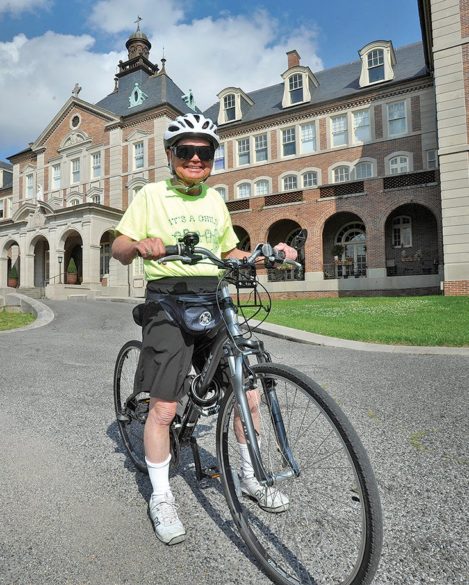
Archbishop Hughes recalls being inside the adoration chapel at Our Lady of Mercy Parish in Baton Rouge. It finally had become apparent that the floodwalls of the 17th Street Canal had collapsed and Lake Pontchartrain was angry and winning.
“I was just overwhelmed and didn’t know where to begin or what to say or do,” Archbishop Hughes said. “I was putting this all on the Lord, and, of course, the Lord was remaining silent.”
And then, at the end of the hour he said it struck me that the Lord was not saying anything, “but he’s present, and he’s expressing through his presence – support.”
“So, what I say or what I do may be secondary to being God’s presence to the people. That brought inner peace to me,” he told the Clarion Herald, archdiocesan newspaper of New Orleans.
In his life as a priest, spiritual director, seminary rector and bishop, Archbishop Hughes has been masterful in helping others calm the troubled waters churning within themselves. The pitched-fork battles that characterize our social interactions these days – as a nation and as a church – cry out for healing.
Those neuralgic divisions over social policy and the obvious lack of fair play in public discourse are not going to be solved overnight. In his years of spiritual mentorship, Archbishop Hughes says healing must start with a personal commitment to examine our own lives.
“The No. 1 step that’s very helpful to take is to be faithful to some space and time each day of quiet to be present to God,” Archbishop Hughes said. “If we don’t step back from the swirl of messages and emotions going on around us, we’re not going to get sufficient distance to see reality more objectively and sort out truth from falsehood or half-truth. And, we’re not going to experience the peace in ourselves that the world needs so much to receive from us.
“If we’re going to be able to make some positive contribution, we first have to be faithful to a regular time of placing ourselves before God and asking him for the grace to see ourselves, to see other people, to see the world and all that’s going on, and even to see the demonic, as they are and, with his eyes, learn what it is he wants me personally to try to do that reverses, in some small way, and counters evil with good.”
(Finney is executive editor/general manager of the Clarion Herald, newspaper of the Archdiocese of New Orleans.)
By Anna Capizzi Galvez
WASHINGTON (CNS) – A new documentary on Sister Thea Bowman shines a light on her life and work as an advocate for racial justice and intercultural understanding.
The idea for the documentary came to Franciscan Sister Judith Ann Zielinski, who wrote and produced the film, after the 2020 death of George Floyd while in police custody in Minneapolis.
“I thought, I have to do something, what can I do?” and “Thea Bowman popped into my head. She was a Franciscan sister, a woman who had been fighting systemic racism in her own time and in her own way.”
The documentary is a comprehensive look at Sister Thea, the first African American member of the Franciscan Sisters of Perpetual Adoration and one of six Black Catholics known as a “Servant of God.”
It also makes a case for her sainthood and for contemporary spirituality, Sister Zielinski said.
“Going Home Like a Shooting Star: Thea Bowman’s Journey to Sainthood,” comes from NewGroup Media and the Diocese of Jackson, Mississippi. Along with archival media of Sister Thea, the documentary features interviews with her colleagues, friends, fellow Franciscan Sisters of Perpetual Adoration, former students and African American scholars, priests and bishops.
The one-hour film, a part of the Interfaith Broadcasting Commission’s fall documentary season, will begin airing on ABC stations nationwide Oct. 2.
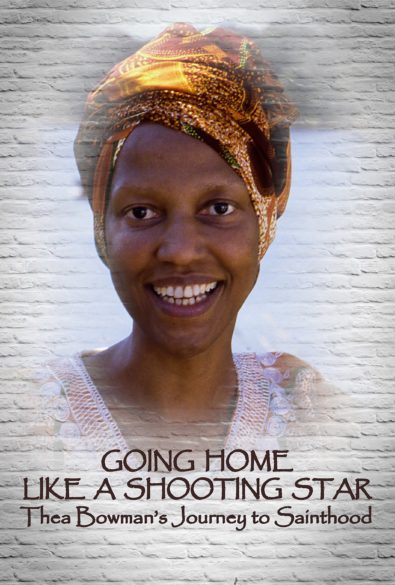
Redemptorist Father Maurice Nutt, associate producer and biographer of Sister Thea, called her an “apostle for racial reconciliation in our church today.”
Noting that she died in 1990, Father Nutt said the film would make her known to a new generation. He also said her life resonates with much of what younger Catholics are looking for in the church – someone who speaks truth to power.
“Her call for justice, justice for the roles of women, justice for those who experience no matter what ethnicity, oppression or hatred” speaks to “us as a church being the body of Christ,” he said.
He also said her call for people to come together and share their gifts is a pivotal message to put a stop to “some of the racial hatred that we see in our society even today,” Father Nutt told Catholic News Service.
Bishop Joseph R. Kopacz of Jackson, Mississippi, petitioner for Sister’s Thea’s cause and executive producer of the documentary, said the film “speaks the need for the church to never give up that desire to be more united and more universal.”
He said Sister Thea had a “timeless message” that included a desire for greater harmony, unity, racial understanding and reconciliation and “being the body of Christ in a more faithful way.”
The bishop also remarked at the depth of her call, describing her as gifted, charismatic, prophetic and a “dynamo of energy.”
Sister Thea was born Bertha Bowman in 1937 in Yazoo City, Mississippi, to Dr. Theon Bowman, a physician and Mary Esther Bowman, a teacher. Her family moved to Canton where she encountered the Franciscan Sisters of Perpetual Adoration at Holy Child Jesus School.
At age 9, Bertha became Catholic and at age 15, she left home for La Crosse, Wisconsin, to attend the Franciscan Sisters of Perpetual Adoration’s high school, later joining the community and taking the name Sister Mary Thea.
Sister Thea went on to receive her doctorate from The Catholic University of America and returned to La Crosse to teach English and linguistics at Viterbo University.
Her parents’ deteriorating health called her back to Canton, where she led the Diocese of Jackson’s first Office for Intercultural Affairs. Her gifts for preaching, singing and teaching led her to countless speaking engagements across the United States.
In 1984, she was diagnosed with breast cancer. She died March 30, 1990, at age 52.
She was declared a “Servant of God” in May 2018 and the U.S. bishops voiced their consent to her canonization cause at their Nov. 2018 fall general meeting in Baltimore.
Sister Eileen McKenzie, president of the Franciscan Sisters of Perpetual Adoration, said Sister Thea’s canonization would “hold up the spirituality and the gift of the Black Catholic Church” and “give courage to our African American brothers and sisters who often don’t have platform.”
It would also be significant for her order. One of the primary values of Franciscans is continual conversion, Sister McKenzie explained, noting that Sister’s Thea’s canonization would call the community into deeper conversion.
“Her spirituality, her witness, her prophetic spirit resonates with us today. It’s hard to even speak of Thea in the past tense. It’s as if she’s with us today,” Father Nutt said.
“Going Home Like a Shooting Star” was funded in part by the Catholic Communication Campaign. Streaming opportunities will be announced by the Diocese of Jackson. To watch a preview of the film, visit: https://youtu.be/tkzhnKG7mxc
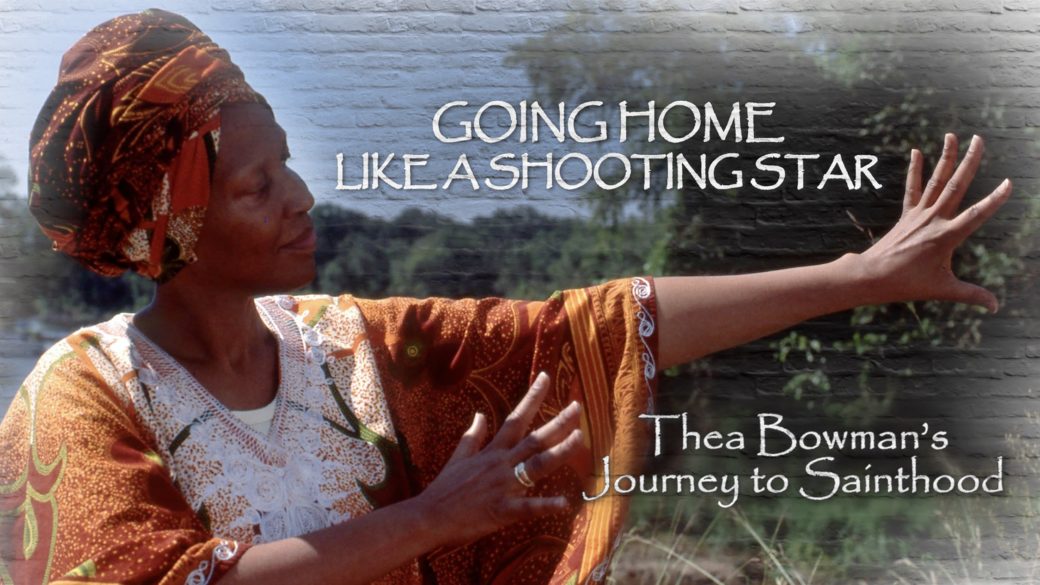
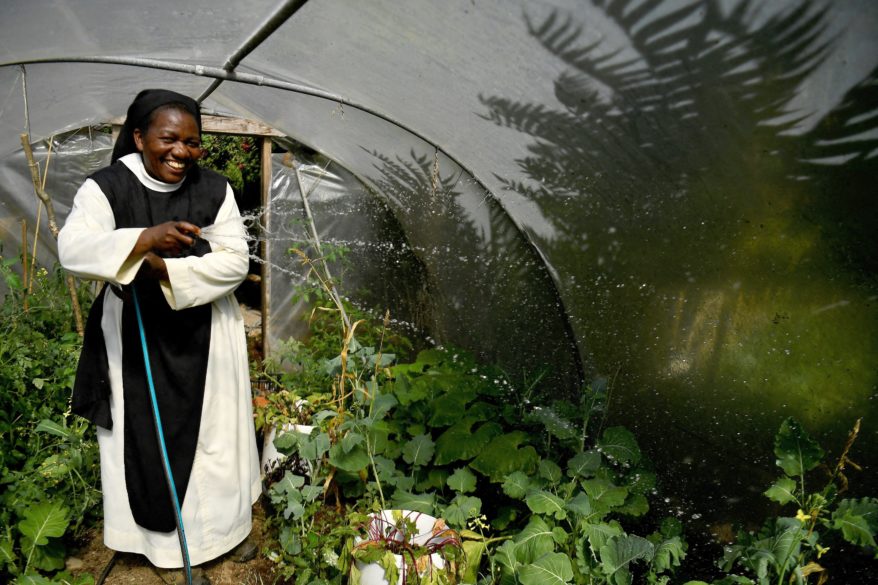
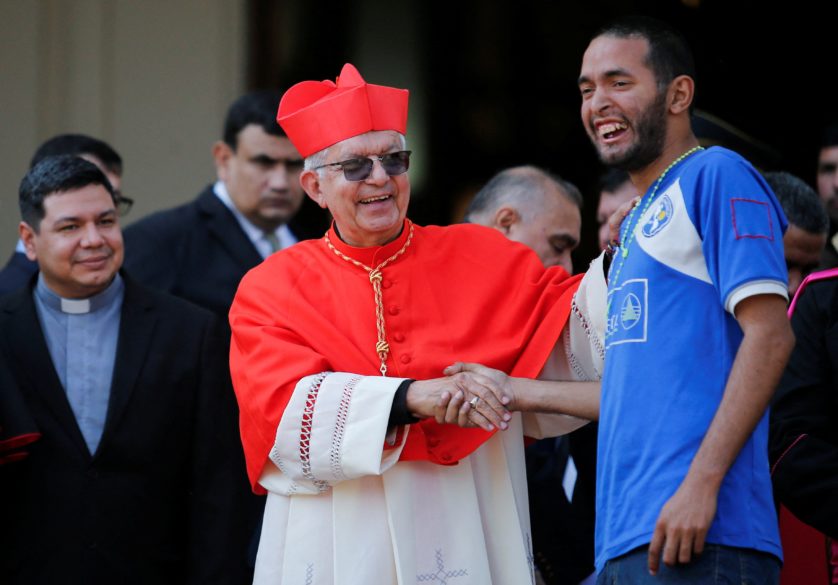
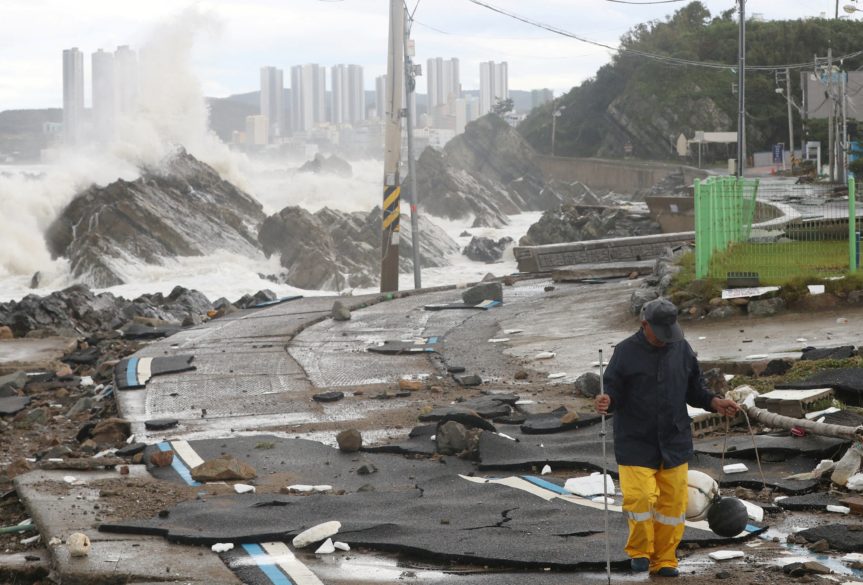
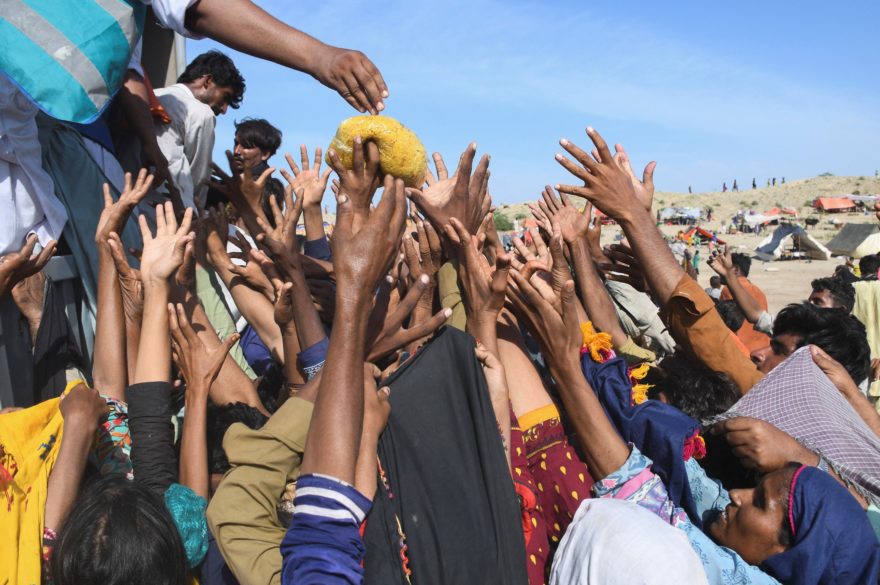
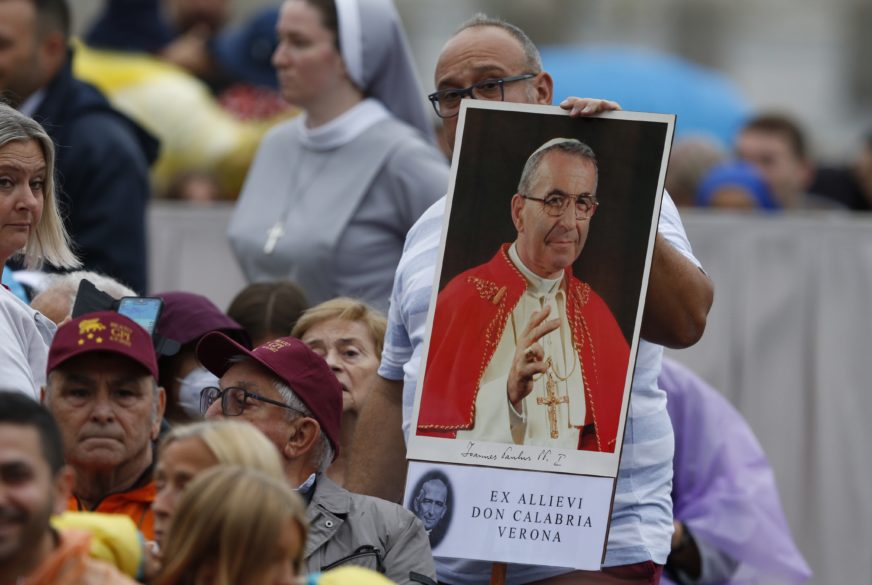
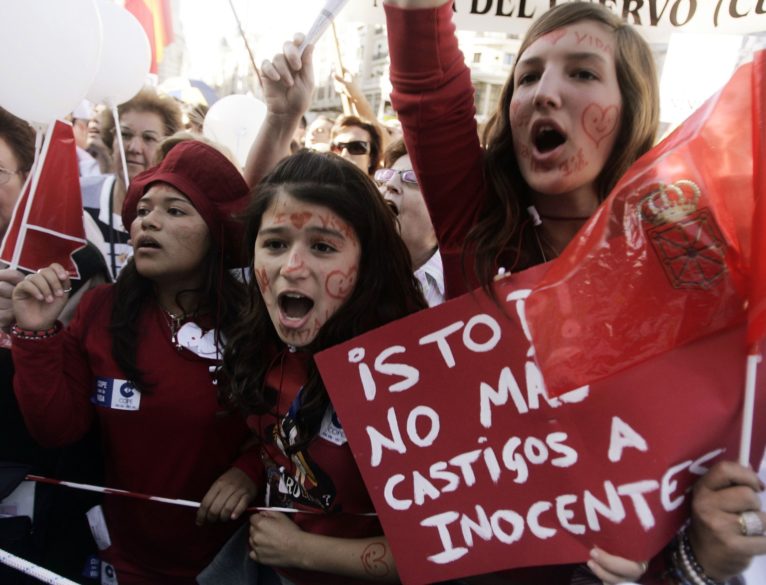
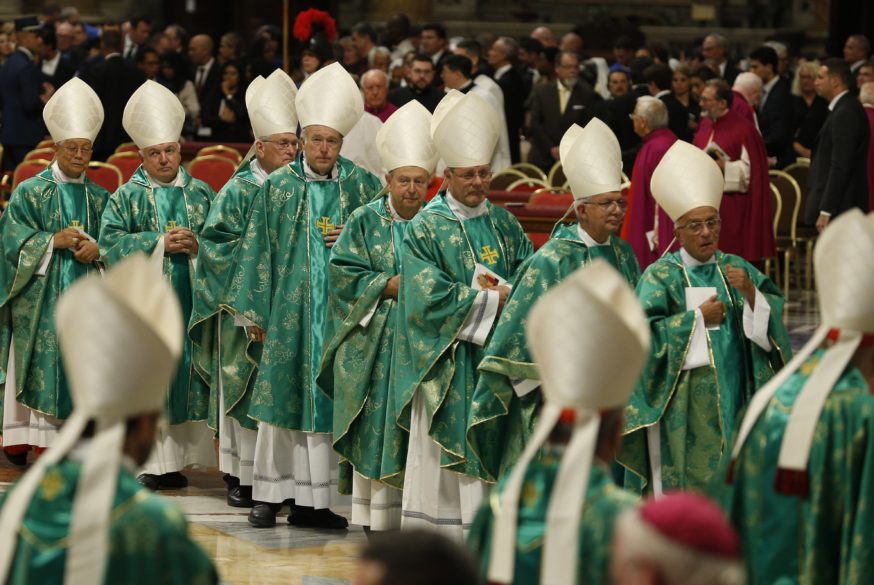
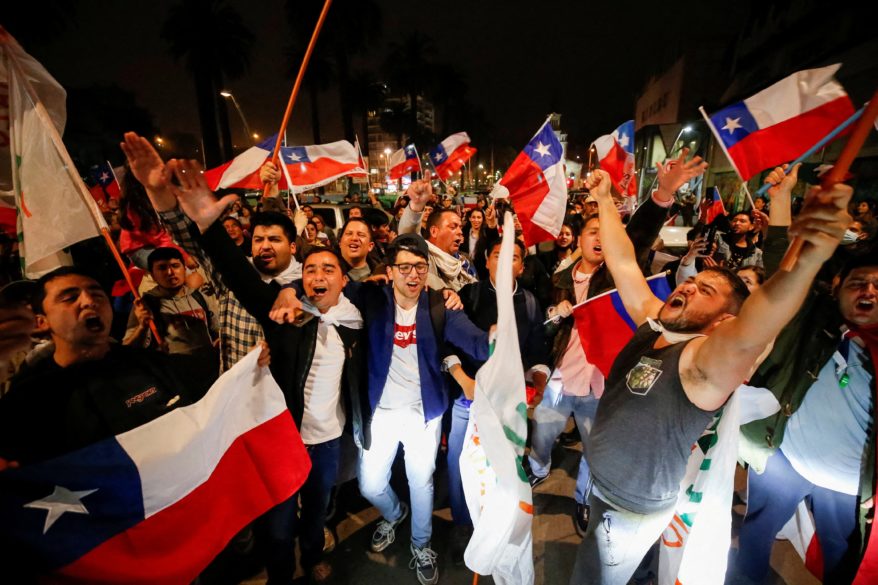

NATION
WASHINGTON (CNS) – Decrying President Joe Biden’s new executive order on abortion, the chairman of the U.S. bishops’ pro-life committee said Aug. 5 that “continued promotion of abortion takes lives and irreparably harms vulnerable pregnant mothers, their families and society. Even preceding the Dobbs decision, my brother bishops and I have implored the nation to stand with moms in need, and work together to protect and support women and children,” Baltimore Archbishop William E. Lori said in a statement. “It is the wrong direction to take at a moment when we should be working to support women and to build up a culture of life,” added the prelate, who heads the U.S. Conference of Catholic Bishops Committee on Pro-life Activities. On Aug. 3, Biden signed an executive order instructing the Department of Health and Human Services “to advance access to reproductive health care services, including, to the extent permitted by federal law, through Medicaid for patients traveling across state lines for medical care.” In his statement, Archbishop Lori said: “I continue to call on the president and all our elected officials to increase support and care to mothers and babies, rather than facilitate the destruction of defenseless, voiceless human beings,” he said.
LAFAYETTE, La. (CNS) – The annual Fête-Dieu du Têche in the Diocese of Lafayette took place on the feast of the Assumption, Aug. 15, and this year’s 40-mile eucharistic procession by boat down the Bayou Têche coincides with the U.S. Catholic Church’s three-year National Eucharistic Revival now underway. “In an effort to cultivate a deeper devotion to Jesus’ presence in the Eucharist, boaters will be able to choose a patron from a list of 50 eucharistic witnesses – saints and blesseds “who exemplified a life totally dedicated to Jesus in the Holy Eucharist,” according to a news release about this year’s event. Saints known for their love of the Eucharist were highlighted, including St. Thomas Aquinas, St. Jean Vianney, St. Katharine Drexel, St. Teresa of Kolkata, as well as Blessed Carlo Acutis. “The intention for the all-day spiritual and cultural celebration will be for a ‘Renaissance Eucharistique’ in Acadiana and beyond,” the release said. Acadiana refers to the French Louisiana region – composed of 22 parishes – that is home to the Cajun people. Cajuns are descendants of the Acadians, a people exiled from present-day Nova Scotia by the British during the French and Indian War. They settled along the bayous and prairies of southwest Louisiana.
VATICAN
VATICAN CITY (CNS) – Pope Francis plans to make his long-awaited visit to Ukraine before his trip to Kazakhstan in September, said Andrii Yurash, Ukraine’s ambassador to the Holy See. In a series of tweets posted Aug. 6 after meeting with the pope, Yurash said the people of Ukraine “have been waiting for the pope” since the start of the war and will “be happy to greet him before his trip to Kazakhstan.” “I am very close to Ukraine and want to express this closeness (through) my visit to Ukraine,” the pope said, according to the Ukrainian ambassador. “Moments of communication with (the) Holy Father are always inspirational,” he said in a follow-up tweet. “Especially when there is a chance to discuss and promote subjects that are ‘on the table’ for a long time, like the pope’s visit to Ukraine.” The pope expressed on several occasions his desire to not only visit Ukraine, but also Russia to plead for an end to the conflict. In an interview with Catholic News Service July 18, Yurash said that while Ukraine was ready for a papal visit, he doubted the pope would be able to visit Moscow.
VATICAN CITY (CNS) – Pope Francis recognized the martyrdom of Hungarian Father Péter Oros, who was killed at the height of the Cold War by Soviets in Ukraine. During a meeting Aug. 5 with Cardinal Marcello Semeraro, prefect of the Dicastery for the Causes of Saints, the pope also signed decrees advancing the sainthood causes of four other men and one woman. According to the dicastery’s website, Father Oros was born in Biri, present-day Hungary, in 1917 and was ordained a priest for the Ruthenian Eparchy of Mukachevo in 1942. Some records indicate a Byzantine bishop born in the same year with a similar name. Although the Dicastery for the Causes of Saints states Father Oros was an Eastern-rite Catholic priest, it was not unusual at the time for an auxiliary bishop to be named clandestinely. After the annexation of the Transcarpathian territory in present-day Ukraine, the suppression of Eastern Catholic churches forced Father Oros into hiding. After a warrant for his arrest was issued in 1953, he was shot and killed by a police officer at a train station in Siltse, Ukraine, while attempting to flee.
WORLD
LAGOS, Nigeria (CNS) – Nigerian officials identified six suspects arrested in connection with the June 5 attack that killed 40 people at St. Francis Catholic Church in Owo. Maj. Gen. Jimmy Akpor, defense department spokesman, said all were linked to the Islamic State West Africa Province group. He said the arrests were made through a joint effort of military and defense officials. Akpor said a preliminary investigation showed that “Idris Abdulmalik Omeiza was the mastermind of the terror attack on the Catholic Church in Owo as well as the attack on a police station” in Kogi state June 23. In the second attack, a police officer was killed and weapons were stolen. Omeiza is sometimes known as Bin Malik. Police also arrested Momoh Otohu Abubakar, Aliyu Yusuf Itopa and Auwal Ishaq Onimisi for the Owo attack, in which attackers sneaked into a Pentecost Mass with explosives. Akpor confirmed Aug. 10 that the four were arrested Aug. 1. On Aug. 11, Akpor said officials had arrested two more suspects: Al-Qasim Idris and Abdulhaleem Idris. Officials did not release a motive for the attack.
AACHEN, Germany (CNS) – Missio, one of Germany’s Pontifical Mission Societies, marked the third World Day Against Witch Hunts Aug. 10 by warning that the phenomenon is on the increase worldwide. The German Catholic news agency KNA said that in at least 43 countries, women, but also men and children, are in mortal danger because they are being persecuted as alleged witches, according to the 2022 World Map of Witch Hunts published by missio Aachen. Missio said it had added Sierra Leone and Zimbabwe to the map since last year. Most of the countries affected are in Africa, but the phenomenon also exists in Southeast Asia as well as Mexico, Bolivia, Guatemala and Haiti. The current missio world map is based on conservative estimates. Other lists put the number of affected countries near 60, KNA reported. Experts said more people had been killed as alleged witches and sorcerers worldwide in the past 60 years than in the 350 years of European witch hunts. The accusation of witchcraft often is triggered by sudden and inexplicable deaths or illnesses, but also by weather phenomena, Swiss Franciscan Sister Lorena Jenal said in a recent interview with KNA.
WASHINGTON (CNS) – Cuban bishops and Pope Francis asked for prayers as a major fire has caused at least one death, more than 100 injuries and left 17 firefighters missing in Cuba. The fire initially began with a lightning strike that hit a tank at an oil facility Aug. 5 and has since spread along the port city of Matanzas. Thousands were evacuated from the region as the fire spread from one tank to three. Some feared wind was spreading the contamination to other parts of the island, including to the capital, Havana, about 60 miles away. Pope Francis, in a telegram sent to the Cuban bishops via Cardinal Pietro Parolin, Vatican secretary of state, said he was following news about the “unfortunate accident. May the Lord grant you strength in this moment of pain and sustain the work of extinction (of flames) and (of) search and rescue,” the telegram said.